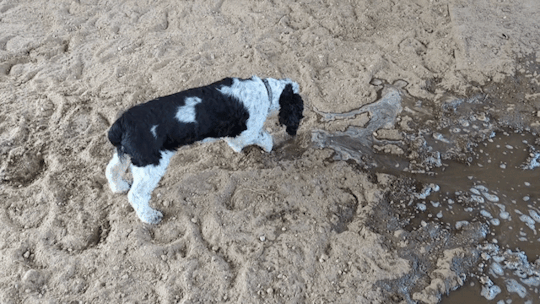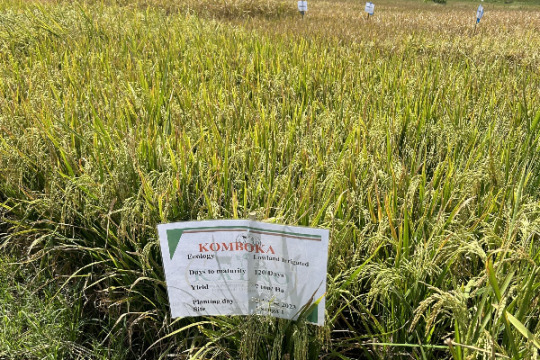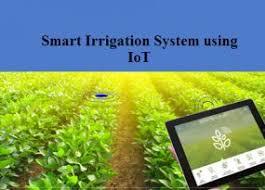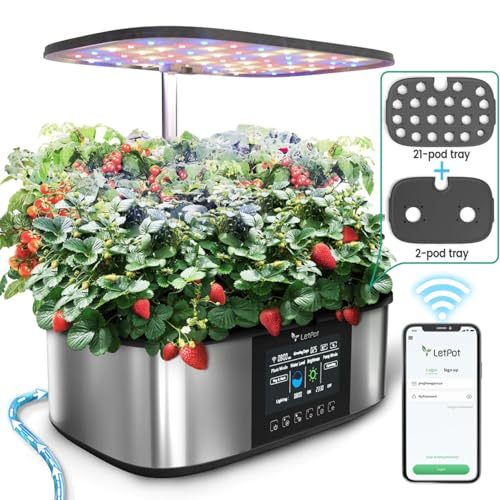#smart irrigation
Text
Want to find out how to save up to 50% on your home water bill? We compare the two best sprinkler controllers to save you money: Rachio vs Orbit B-hyve
We pit the Rachio vs Orbit B-hyve. Both are great options for smart sprinkler controllers. They both have a variety of features that can help you save water and money, and they both make it easy to control your sprinklers from anywhere.
#rachio#orbit#bhyve#b-hyve#smart home#smart irrigation#smart sprinkler#save money#tech#product recommendations#product reviews#online shopping#shoppers#affordable
1 note
·
View note
Text
Smart Irrigation Market by Type (Weather Based, Soil Moisture Based) Component (Monitoring, Controlling, Connectivity, Software), Irrigation Type (Sprinkler, Drip, Surface, Pivot), End Use, and Geography - Global Forecast to 2030
#Smart Irrigation Market#smart irrigation#smart irrigation system#irrigation#agriculture#agribusiness#agritech#technology#innovation
0 notes
Link
Welcome to our captivating exploration of sustainable landscaping and irrigation. As we embark on a greener future, let us immerse ourselves in the art of harmonizing our outdoor spaces with nature while minimizing our environmental impact. In this article, we will delve into the latest trends, innovative techniques, and eco-friendly products available on Amazon. Join us on this exhilarating journey as we unveil the secrets to creating a sustainable landscape and optimizing irrigation systems.
#landscaping#butterfly milkweed#eco harmony#sustainable#irrigation#rain water#smart irrigation#drip irrigation
0 notes
Text
Smart Irrigation Market 2022 Size, Share, Upcoming Industry Trends, Business Development Analysis, Segmentation and Forecast by 2028
Smart Irrigation Market 2022 Size, Share, Upcoming Industry Trends, Business Development Analysis, Segmentation and Forecast by 2028
This report studies the Smart Irrigation Market with many aspects of the industry like the market size, market status, market trends and forecast, the report also provides brief information of the competitors and the specific growth opportunities with key market drivers. Find the complete Smart Irrigation Market analysis segmented by companies, region, type and applications in the report.
The…
View On WordPress
#Covid-19 Impact Analysis#Smart Irrigation#Smart Irrigation forecast#Smart Irrigation Industry#Smart Irrigation Market#Smart Irrigation price#Smart Irrigation report#Smart Irrigation research#Smart Irrigation share#Smart Irrigation trends
0 notes
Link
The smart irrigation process has the potential to manage and reduce water usage. Several smart equipment, such as smart irrigation controllers, allow a better understanding of the soil as well as crop moisture content.
The growth in the global smart irrigation controllers market is driven by increasing awareness toward tech-based farming, along with the growing government support for promoting the use of smart irrigation. Supported by government policies and technological developments, landscape owners and growers across the globe are expected to increase the implementation of smart irrigation technologies. Moreover, the smart irrigation controllers market is likely to be impacted by several upcoming trends and opportunities, further propelling growth in the industry.
Request for the Sample Report at: https://bisresearch.com/requestsample?id=1325&type=download
#irrigation controller#smart sprinkler controller#sprinkler controller#smart sprinkler#smart irrigation system#smart sprinkler system#smart irrigation#wireless sprinkler controller#smart water sprinkler#wireless sprinkler system#smart lawn sprinkler#irrigation controllers#farm tech timers#drip irrigation controllers
0 notes
Text
Smart Irrigation Technology Based on Moisture
A moisture-based system is the alternative kind of intelligent irrigation system. The soil's real moisture content is measured by this technology using sensors. Based on this information, it subsequently modifies the Smart Irrigation Market water's timing. Moisture-based systems are sold as both integrated controllers and add-on technology, similar to how weather-based systems are. This kind of device can cost anything from a few hundred dollars to several thousands of dollars.

There are two different kinds of moisture-based systems available; be aware of this. The first method, called suspended-cycle irrigation, employs a conventional automated and timed watering schedule. The sole distinction is that if the soil moisture threshold is exceeded, watering is not permitted. It won't alter the pre-programmed timetable to allow for additional watering, though, if the soil is too dry. Many of these sensors can be integrated with conventional controllers already in use.
Read more @ https://digitalgrowinfo.blogspot.com/2022/08/the-right-thing-to-do-is-to-use-smart.html
#Smart Irrigation#Smart Irrigation Market#Smart Irrigation Demand#Smart Technologies#Coherent Market Insights
0 notes
Text
Today we are learning Civil Engineering! We are exploring canals and irrigation.
Afterwards we went through the wading pool a few times and then dumped it. That's some fine, dusty sand, and it makes sticky sloppy mud. Good day for it, though, still under heatwave conditions.
[Video Description: Tristan, a black and white cocker spaniel, splashes in water at the edge of a puddle. As he splashes, he digs out the edges of the puddle, and water flows toward him in new rivulets. The first time he jumps backwards as the water rushes towards him, but afterwards he lets it run--has he done this before, with a bigger puddle? Sounds: splashing in water, and behind us, horses banging buckets as they eat.]

Good grief he's adorable 😄
#tristan#cocker spaniel#dogblr#the professor#expanding his interests beyond geology#wet beast wednesday#video#clever boy#gif#the laughter is gonna kill me#emergency bath#a muddy dog is a happy dog#civil engineering canals and irrigation#a dam smart boy
147 notes
·
View notes
Text
Rewatching the Indiana Jones movies and holy shit they are way more racist than I remember
They are like…really bad
#indiana jones#anti indiana Jones#temple of doom and kingdom of crystal skull especially like holy fuck#‘indigenous people weren’t smart enough to come up with farming or irrigation on their own so aliens taught them’#not the Pristine Myth#fucking hate that shit#AND DONT GET ME STARTED ON THE ABSOLUTE BULLSHIT THAT WAS TEMPLE OF DOOM#stereotyping Hindu culture as one of violence and using fucking voodoo dolls#it makes me sick#using Kali in a way that made them look like savages#honestly fuck Lucas and Spielberg for these movies specifically#I’ve grown uncomfortable with the idea over Indiana Jones as I’ve grown older but these movies really make me hate him#I wanna see my reverse indiana Jones in action#give me a woman who returns artifacts from the British museum to their original cultures and fucks old men#where’s that movie?#also I forgot Shia was in it and holy shit did I get whiplash
17 notes
·
View notes
Text
KALRO and IRRI Partnership to Promote Adoption of Improved High-Yielding Rice Varieties and Climate-Smart Farming
Kenya through the Kenya Agricultural and Livestock Research Organization (KALRO) has partnered with the International Rice Research Institute (IRRI) to promote the adoption of improved high-yielding rice varieties and climate-smart agronomy for increased productivity and income to help achieve food and livelihood security in the country.
In this, KALRO and IRRI jointly organized a Farmers’ Field…

View On WordPress
#and Sindano (IR2793-80-1)#Bunyala Irrigation Scheme#climate change#climate-smart agronomy#Farmers’ Field Day#high-yielding rice varieties#International Rice Research Institute#Kenya Agricultural and Livestock Research Organization#Komboka (IR 05N221)#Mkombozi (08FAN10)#National Rice Development Strategy#Siaya County
0 notes
Text
#Smart Irrigation Market#Smart Irrigation System#Weather-based Irrigation#Sprinkler Irrigation#Polaris Irrigation#Smart Controllers#Smart Sprinkler
0 notes
Text

Embracing a smart irrigation system using IoT empowers farmers with actionable insights for sustainable crop management. By deploying IoT sensors across fields, crucial parameters like soil moisture, temperature, and humidity are continuously monitored. This real-time data is then analyzed to dynamically adjust irrigation schedules, ensuring optimal water usage and minimizing runoff. Furthermore, remote accessibility allows farmers to monitor their fields from anywhere, facilitating timely interventions and maximizing crop health and yield.
0 notes
Text
Smart Irrigation Market by Type (Weather Based, Soil Moisture Based) Component (Monitoring, Controlling, Connectivity, Software), Irrigation Type (Sprinkler, Drip, Surface, Pivot), End Use, and Geography - Global Forecast to 2030
0 notes
Text
Smart Irrigation Market 2023 Future Trends, Outlook, Application and Business Opportunities to 2030
Nurturing Growth: The Evolution of Smart Irrigation
Smart irrigation represents a paradigm shift in traditional irrigation practices, leveraging advanced technologies such as IoT, cloud computing, and data analytics to deliver precise, efficient water management solutions. By integrating sensors, weather forecasts, and intelligent controllers, smart irrigation systems empower farmers, landscapers, and homeowners to monitor soil moisture levels, optimize watering schedules, and minimize water wastage.
Request Sample Report: https://www.snsinsider.com/sample-request/3380
Driving Forces Behind Market Expansion
Several factors are propelling the rapid growth of the smart irrigation market:
Water Scarcity and Conservation: With water scarcity becoming a pressing global issue, there is a growing emphasis on water conservation measures in agriculture and landscaping. Smart irrigation technologies enable efficient water usage, reduce runoff, and mitigate water wastage, aligning with sustainability goals and regulatory mandates.
Rising Demand for Precision Agriculture: In agriculture, precision irrigation techniques are gaining traction, driven by the need to maximize crop yields while minimizing input costs. Smart irrigation systems enable farmers to tailor watering schedules based on real-time data, soil moisture levels, and crop requirements, thereby optimizing irrigation practices and enhancing productivity.
Urbanization and Landscaping Trends: The proliferation of urban landscapes, parks, and green spaces has spurred the demand for smart irrigation solutions in landscaping applications. Municipalities, property managers, and homeowners are increasingly adopting smart irrigation systems to maintain lush, healthy lawns and gardens while conserving water resources and reducing maintenance costs.
Transformative Applications Across Industries
The applications of smart irrigation extend across a wide range of sectors, driving innovation and sustainability:
Agriculture: In agriculture, smart irrigation technologies enable precise water management, reducing water consumption, and improving crop health and yields. From large-scale farms to smallholder agriculture, smart irrigation systems empower farmers to optimize irrigation practices, conserve water, and increase profitability.
Landscaping and Turf Management: In landscaping and turf management, smart irrigation systems offer efficient water delivery, soil moisture monitoring, and remote control capabilities. Whether it's golf courses, parks, or residential gardens, smart irrigation solutions ensure vibrant, healthy landscapes while minimizing water usage and maintenance efforts.
Commercial and Municipal Applications: In commercial and municipal settings, smart irrigation systems are deployed to maintain green spaces, sports fields, and public parks. These systems leverage data-driven insights to optimize watering schedules, detect leaks, and conserve water resources, contributing to sustainable urban development and environmental stewardship.
Future Perspectives: Sowing the Seeds of Sustainability
As the smart irrigation market continues to evolve, we can anticipate further advancements in sensor technologies, data analytics, and automation. The integration of AI algorithms, satellite imagery, and predictive modeling will enable smarter, more adaptive irrigation systems capable of responding to dynamic environmental conditions and optimizing water usage in real-time.
In conclusion, smart irrigation represents a cornerstone of sustainable agriculture and landscaping practices, offering a pathway towards efficient water management, enhanced productivity, and environmental conservation. As stakeholders across industries embrace the transformative potential of smart irrigation technologies, we sow the seeds of sustainability and cultivate a greener, more resilient future for generations to come. The journey towards sustainable water management begins with smart irrigation, and the harvest is a thriving planet for all.
Access Full Report Details: https://www.snsinsider.com/reports/smart-irrigation-market-3380
0 notes
Text
LetPot LPH-Max 21 Pods Hydroponics Growing System, [2 Large pods Tray & Automatic Irrigation] Smart Hydroponics Growing System Indoor Garden, APP & WiFi Controlled Self-Managed Nurturing & Watering
LetPot LPH-Max 21 Pods Hydroponics Growing System, [2 Large pods Tray & Automatic Irrigation] Smart Hydroponics Growing System Indoor Garden, APP & WiFi Controlled Self-Managed Nurturing & Watering
Product Description & Features:
🥇[New Upgrade]: The new version upgrade includes TWO EXCLUSIVE LARGE-HOLE planting trays, suitable for larger fruits and flowering plants! With the second-generation…

View On WordPress
#2#21%#AeroGarden#App#Automatic#Controlled#Garden#Growing#Hydroponics#Indoor#Irrigation#Large#LetPot#LPH-Max#Nurturing#Pods#Self-Managed#Smart#System#Tray#Watering#WiFi.
0 notes
Text
youtube
Agricultural technology is using technology in agriculture, horticulture, and aquaculture to improve yield, efficiency, and profitability. In this video, we're deep-diving into the fertile fields of tech and agriculture the future of farming. Get ready to witness how groundbreaking technology revolutionizes farming practices, from the seeds sown to the crops harvested!
Agriculture technology, often referred to as "AgTech" or "agricultural technology," encompasses a wide range of innovative solutions, tools, and practices that aim to enhance the efficiency, productivity, sustainability, and profitability of agricultural processes and systems. It involves the integration of modern technologies, such as information technology, data analytics, automation, biotechnology, and more, into various aspects of agriculture to address the challenges and opportunities faced by the global farming community.
Precision farming involves the use of sensors, drones, satellites, and GPS technology to collect and analyze data related to soil composition, moisture levels, weather patterns, and crop health. By gathering real-time information, farmers can make informed decisions about when to plant, irrigate, fertilize, and harvest, thereby minimizing waste and maximizing yields.
Robotic technology is revolutionizing labor-intensive tasks in agriculture. Robots can plant seeds, and weed fields, apply pesticides precisely, and even harvest crops. Automation reduces the need for manual labor, which is increasingly scarce and expensive in many regions.
With the growing challenges of land scarcity and changing climate patterns, vertical and indoor farming systems have emerged. These systems utilize controlled environments, artificial lighting, and efficient space utilization to grow crops in vertically stacked layers or indoor facilities, allowing year-round production and reduced dependency on traditional agricultural land.
The future of farming is undergoing a technological revolution that promises increased efficiency, sustainability, and resilience in the face of global challenges. AgTech solutions are not only changing the way food is produced but also fostering a more interconnected and data-driven agricultural landscape, ensuring that we can feed the world's growing population while safeguarding our planet's resources.
#agriculture#farming#farming technology#future of agriculture#agriculture technology#tech in agriculture the future of farming#tech in agriculture#LimitLess Tech 888#importance of technology in agriculture#agriculture farming#modern agriculture technology#future of farming#the future of farming technology#modern agriculture machine#sustainable agriculture#sustainable farming#technology in agriculture#tech and agriculture#smart irrigation system#vertical farming#Youtube
0 notes
Text
youtube
Agricultural technology uses agriculture, horticulture, and aquaculture technology to improve yield, efficiency, and profitability. In this video, we're deep-diving into the fertile fields of tech and agriculture the future of farming. Get ready to witness how groundbreaking technology revolutionizes farming practices, from the seeds sown to the crops harvested!
Agriculture technology, often referred to as "AgTech" or "agricultural technology," encompasses a wide range of innovative solutions, tools, and practices that aim to enhance the efficiency, productivity, sustainability, and profitability of agricultural processes and systems. It involves the integration of modern technologies, such as information technology, data analytics, automation, biotechnology, and more, into various aspects of agriculture to address the challenges and opportunities faced by the global farming community.
Precision farming involves the use of sensors, drones, satellites, and GPS technology to collect and analyze data related to soil composition, moisture levels, weather patterns, and crop health. By gathering real-time information, farmers can make informed decisions about when to plant, irrigate, fertilize, and harvest, thereby minimizing waste and maximizing yields.
Smart irrigation systems utilize sensors and data analysis to determine when and how much water crops require. This helps prevent over-irrigation and water wastage, resulting in water conservation and improved crop quality.
The future of farming is undergoing a technological revolution that promises increased efficiency, sustainability, and resilience in the face of global challenges. AgTech solutions are not only changing the way food is produced but also fostering a more interconnected and data-driven agricultural landscape, ensuring that we can feed the world's growing population while safeguarding our planet's resources.
Tech in Agriculture: The Future of Farming
#agriculture#farming#farming technology#future of agriculture#agriculture technology#tech in agriculture the future of farming#tech in agriculture#LimitLess Tech 888#importance of technology in agriculture#agriculture farming#modern agriculture technology#future of farming#the future of farming technology#modern agriculture machine#sustainable agriculture#sustainable farming#technology in agriculture#tech and agriculture#smart irrigation system#vertical farming#Youtube
0 notes